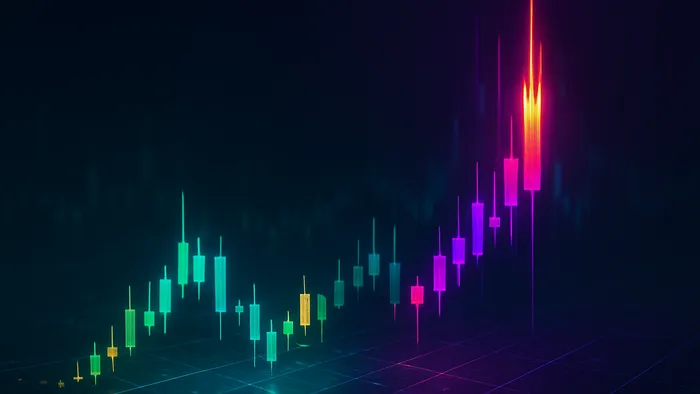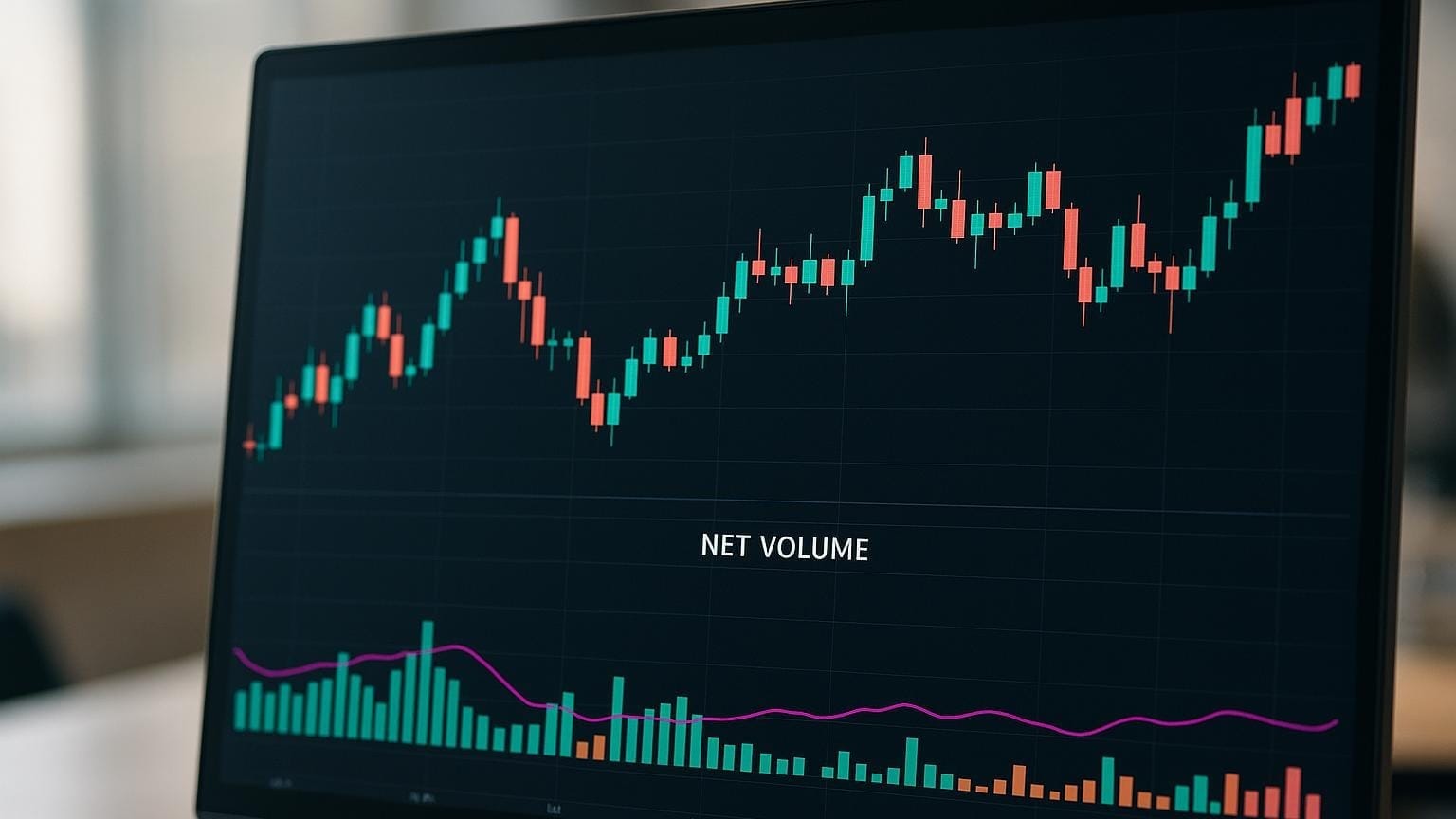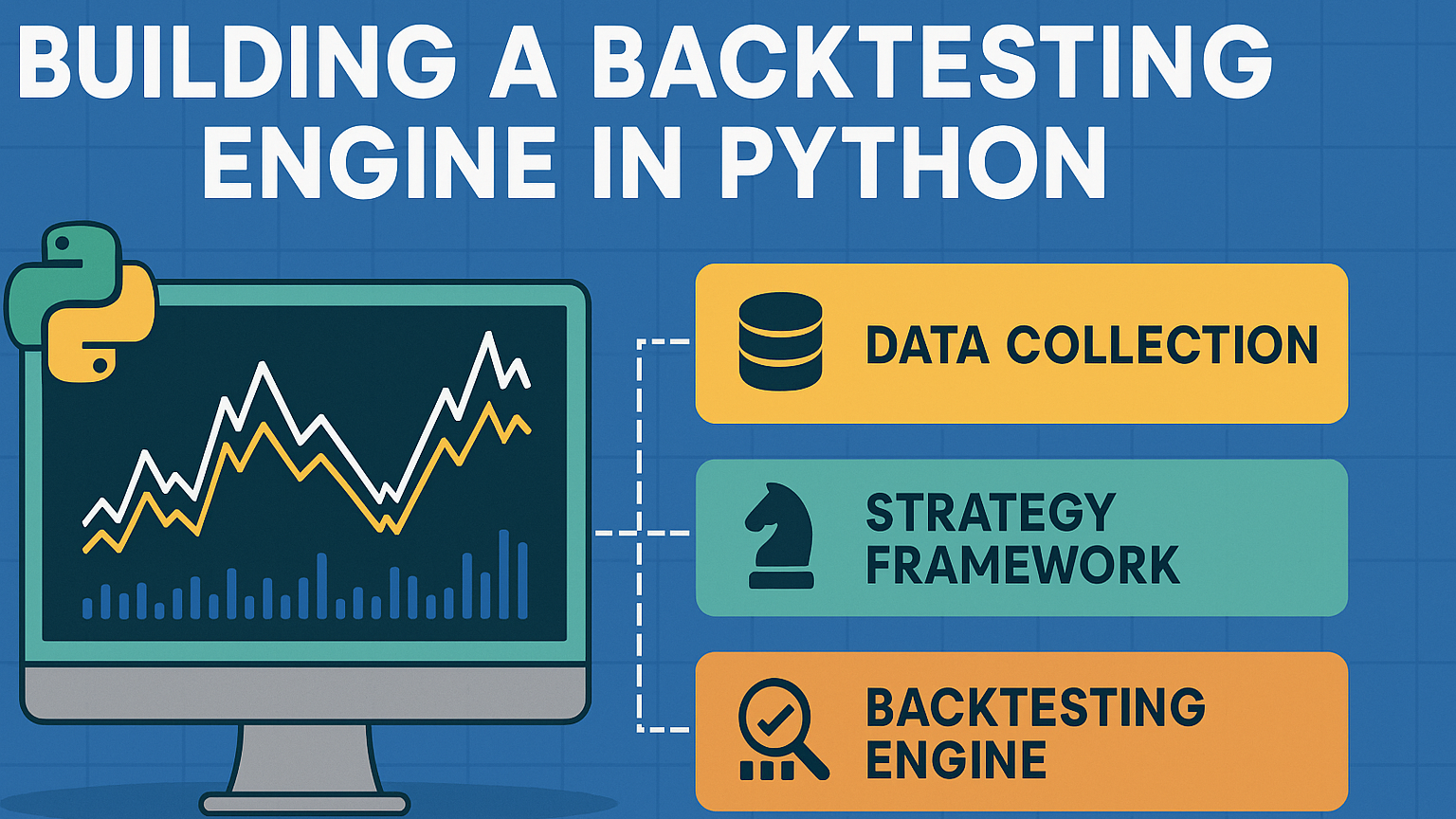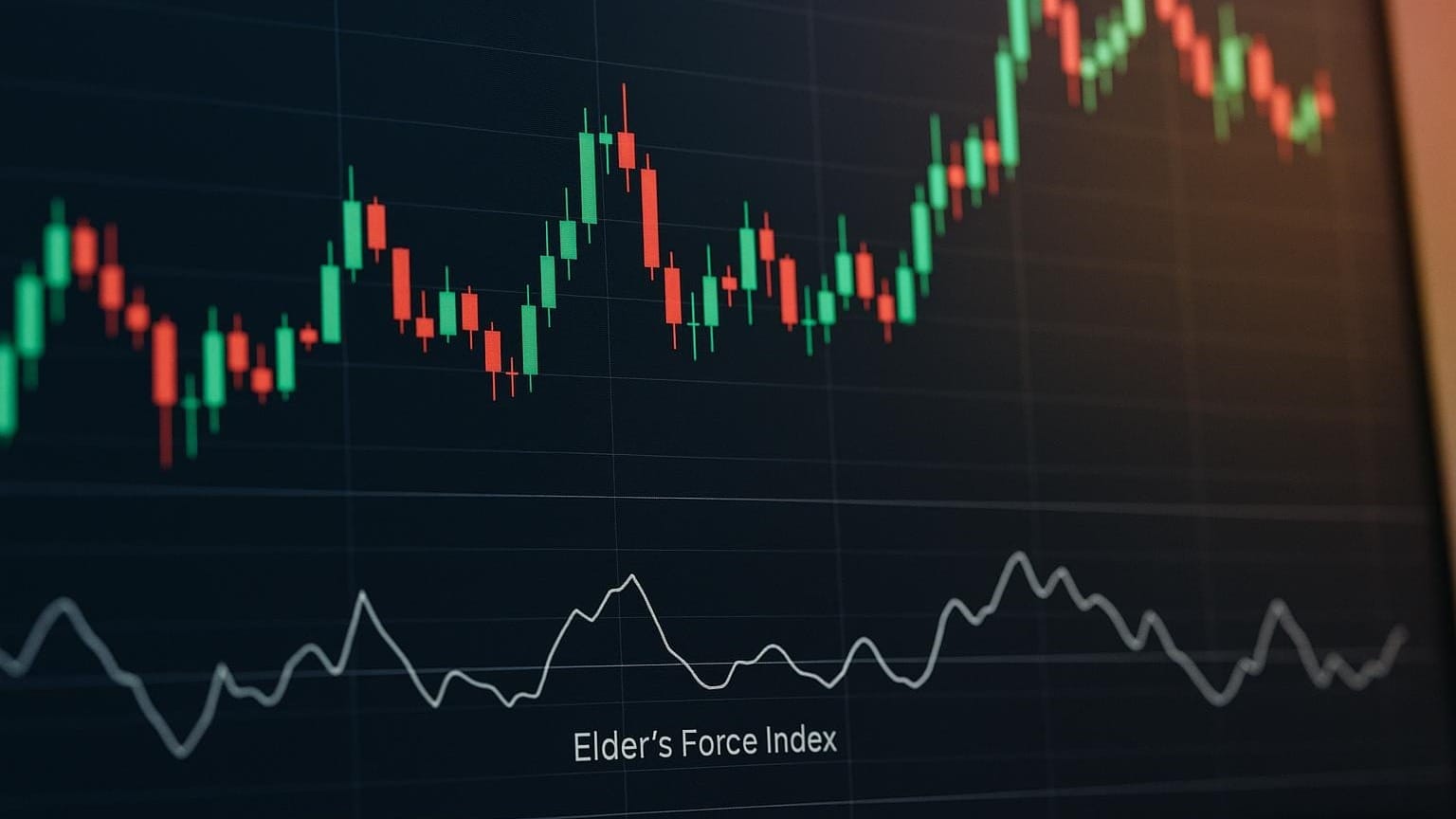Explore volatility strategies in algorithmic trading to harness price fluctuations and manage risks effectively in dynamic markets.
Volatility in financial markets creates both risks and opportunities for algorithmic trading. With machines executing about 80% of daily trades in the U.S., understanding and leveraging market volatility is crucial for success. This guide explores how algorithms capitalize on price fluctuations, key trading strategies, and tools to manage risks effectively.
Key Takeaways:
- Benefits of Volatility in Algo Trading: Speed, consistency, scalability, and precision allow algorithms to exploit price movements efficiently.
- Popular Strategies:
- Trend Following: Ride strong market trends using moving averages and momentum indicators.
- Mean Reversion: Target assets likely to revert to average prices using Bollinger Bands and RSI.
- Breakout Trading: Profit from sharp price moves by monitoring volatility compression and expansion.
- Essential Tools: Indicators like ATR, Bollinger Bands, and VIX help analyze market trends and manage risks.
- Risk Management: Use dynamic position sizing, adaptive stop-losses, and portfolio diversification to protect against market shocks.
Quick Overview of Strategies:
| Strategy | Focus | Tools Used |
|---|---|---|
| Trend Following | Riding market trends | Moving Averages, MACD, ATR |
| Mean Reversion | Reverting to price averages | Bollinger Bands, RSI |
| Breakout Trading | Capturing sharp moves | ATR, Volume Indicators |
Bollinger Bands and RSI: The Golden Pair for Volatility Trading
Main Volatility Trading Strategies
Algorithmic trading systems are particularly effective at executing strategies designed to take advantage of market volatility. Here, we’ll break down three approaches that focus on price fluctuations.
Trend Following in Volatile Markets
Trend-following algorithms aim to identify and ride strong market movements by using technical indicators to gauge momentum and timing. For example, when the S&P 500 trades below its 200-day moving average, daily price swings average 2.09%, compared to just 1.05% when it’s above. As Paul Tudor Jones puts it:
"My metric for everything I look at is the 200-day moving average of closing prices. I've seen too many things go to zero, stocks and commodities. The whole trick in investing is: 'How do I keep from losing everything?' If you use the 200-day moving average rule, then you get out. You play defense, and you get out."
Trend-following algorithms rely on several key tools:
| Component | Purpose | Implementation |
|---|---|---|
| Moving Averages | Identify trend direction | Use multiple timeframes (10, 50, 200-day) |
| MACD | Confirm momentum | Look for signal-line crossovers |
| ATR | Measure volatility | Adjust position sizes and stops |
| Trailing Stops | Manage risk | Set stops based on ATR multiples |
Next, let’s look at how mean reversion strategies work in volatile, range-bound markets.
Mean Reversion Trading
Mean reversion strategies focus on identifying assets that have moved too far from their typical range and are likely to revert to their average value. These strategies perform well in choppy markets where prices tend to oscillate around a central point. Common techniques include:
- Using Bollinger Bands to spot extreme price moves.
- Applying RSI and Stochastic indicators for overbought or oversold conditions.
- Scaling positions based on the size of price deviations.
- Enforcing strict stop-loss rules to manage risks.
On the other hand, breakout strategies aim to profit from sharp, sudden moves in volatility.
Trading Volatility Breakouts
Breakout trading algorithms are designed to capture significant price moves during periods of heightened volatility. These systems monitor price consolidation and then trigger trades when volatility expands beyond critical levels. Their process typically involves:
- Setup Analysis: Track volatility compression using tools like ATR and Bollinger Band width.
- Confirmation Filters: Validate trade signals with volume and momentum indicators.
- Position Management: Scale into and out of trades while maintaining a core position.
To ensure success, these strategies incorporate strict risk controls, including dynamic parameter adjustments, careful position sizing, and thorough backtesting.
Using Volatility Tools in Algorithms
Top Volatility Indicators
Algorithmic trading systems rely on volatility indicators to make informed decisions. One widely recognized tool is the VIX, which forecasts 30-day volatility for the S&P 500 (SPX).
Here are some commonly used volatility indicators:
| Indicator | Primary Function | Implementation Strategy |
|---|---|---|
| ATR | Measures volatility | Identifies consolidation and potential breakout phases |
| Bollinger Bands | Analyzes price range | Establishes dynamic support and resistance levels |
| Keltner Channels | Tracks trends | Used alongside momentum indicators for signal confirmation |
| Donchian Channels | Detects breakouts | Generates buy/sell signals at channel boundaries |
"Bollinger Bands should be used in conjunction with other technical analysis tools... they're not fail-safe or foolproof indicators of market trends."
While these indicators provide valuable insights, pairing them with solid risk management practices is essential, especially during market swings.
Risk Controls for Volatile Markets
Managing risk becomes even more critical when markets are volatile. Algorithms should dynamically adjust based on volatility insights. As Gordon Rose, CIIA, points out:
"Past performance is not a predictor for future returns. However, it's a different story when it comes to risk, as past volatility is a much better predictor of future volatility."
To manage risk effectively, algorithms should use these strategies:
- Dynamic Position Sizing: Scale down position sizes during high volatility to maintain consistent risk levels.
- Adaptive Stop-Loss Placement: Use stop-loss orders that adjust based on changing volatility.
- Portfolio Balance Monitoring: Continuously review portfolio exposure and ensure diversification across varying volatility conditions.
Testing Volatility Strategies
Once indicators and risk controls are in place, rigorous testing is necessary to confirm the strategy's effectiveness. LuxAlgo's AI Backtesting Assistant allows traders to evaluate strategies across different timeframes while factoring in transaction costs and market impact.
Key factors to consider during testing include:
- Accounting for realistic transaction costs and slippage.
- Verifying data quality, including completeness and accurate timestamps.
- Assessing performance under various volatility conditions.
- Testing parameter stability during extreme market scenarios.
To ensure the strategy is robust, monitor key risk metrics such as alpha, beta, R-squared, standard deviation, and the Sharpe ratio. These measures help evaluate the strategy's reliability before putting it into action.
Advanced Volatility Trading Methods
ML-Based Volatility Forecasting
Machine learning (ML) models are transforming how volatility is forecasted, surpassing traditional methods by analyzing vast amounts of market data and uncovering deeper patterns. For instance, advanced ML models that incorporate 147 data features across 21 lags have been shown to outperform traditional HAR models in 90% of out-of-sample periods under normal market conditions. Using SHAP analysis, key predictive factors have been pinpointed: mid prices for price discovery, mean bids for understanding market depth, and mean asks for tracking order flow.
"The most critical feature of the conditional return distribution is arguably its second-moment structure, which is empirically the dominant time-varying characteristic of the distribution."
These rapid prediction tools align perfectly with the need for ultra-fast execution in speed trading strategies.
Speed Trading in Volatile Markets
High-frequency trading thrives on the sharp price changes that occur during volatile periods. These systems are designed to execute trades within milliseconds, making them highly effective in capturing fleeting opportunities.
Key elements for successful speed trading include:
- Hardware Optimization: Frequent upgrades ensure competitive execution speeds.
- Direct Market Access: Reducing latency by connecting directly to exchanges.
- Network Infrastructure: Advanced switching technology for fast data transmission.
- Risk Controls: Real-time position monitoring to manage exposure effectively.
"Unexpected things happen, and in volatility you are often at the forefront of this. Risk evolves so fast that you must take this into account. It feels like there is a Black Swan event every year."
In addition to speed, diversifying across multiple asset classes can provide a more balanced approach to managing volatility.
Cross-Asset Volatility Trading
Cross-asset volatility trading takes advantage of relationships between different markets to improve risk-adjusted returns. For example, the Danske Invest Global Cross Asset Volatility (GCAV) fund adopts a strategy split of 70% systematic and 30% tactical.
This approach aims to:
- Deliver consistent risk-adjusted returns with a Sharpe ratio of 0.5.
- Trade volatility across equity, interest rate, and currency markets in the U.S. and Europe.
"Volatility trading is a niche area, so knowledge of the specifics around the microstructure is paramount in order to achieve optimal implementation of the strategies."
To succeed in cross-asset trading, advanced analytical tools are essential:
| Analysis Tool | Primary Function | Key Benefit |
|---|---|---|
| Volatility Surface | Maps option prices across strikes and expiries | Identifies potential mispricing |
| Term Structure | Analyzes volatility trends over time | Spots term premium opportunities |
| Correlation Matrix | Monitors relationships between different assets | Enables effective pair trading |
Risks and Ethics
Handling Market Shocks
Unexpected market events can cause significant disruptions if risk controls aren't in place. Take the Knight Capital incident in August 2012 — this firm lost $440 million in just 45 minutes due to a faulty algorithm. It's a stark reminder of the importance of strong risk management.
Key measures to prevent such disasters include:
| Risk Control | Implementation | Purpose |
|---|---|---|
| Circuit Breakers | Halts trading when losses hit limits | Avoid catastrophic losses |
| Position Limits | Real-time monitoring of exposures | Manage risk concentration |
| Stop-Loss Mechanisms | Automated exit orders at set levels | Minimize downside risk |
| System Redundancy | Backup systems and failover protocols | Ensure operational continuity |
"Algorithmic HFT has a number of risks, the biggest of which is its potential to amplify systemic risk. Its propensity to intensify market volatility can ripple across to other markets and stoke investor uncertainty. Repeated bouts of unusual market volatility could wind up eroding many investors' confidence in market integrity." — Investopedia
These examples underline the importance of adhering to strict regulations and maintaining robust safeguards.
Following Trading Rules
To ensure ethical trading, platforms must actively monitor and prevent manipulative practices like spoofing, layering, and wash trading.
Here are some essential compliance practices:
- Data Integrity: Validate data sources to avoid errors that could lead to unintended trades.
- System Testing: Regularly test and maintain algorithmic systems to ensure reliability.
- Documentation: Keep detailed records of trading logic, risk parameters, and performance metrics.
These internal controls help ensure fair and transparent market operations.
Market Impact Concerns
Risk and compliance measures don't just protect individual firms — they also help maintain overall market stability. Traders must be mindful of their influence on price discovery and market behavior.
To trade responsibly:
- Volume Analysis: Adjust execution speeds to match market liquidity.
- Transparency: Maintain clear audit trails for all trading decisions.
- Impact Monitoring: Use regular analytics to identify and address potential market disruptions.
Additionally, firms should prioritize cybersecurity and validate algorithm performance under various conditions, including stress testing for extreme scenarios. These steps help ensure both operational security and market integrity.
Summary
Key Points Review
Volatility trading strategies rely on careful technical analysis and strict risk management. Below is a breakdown of the critical elements that contribute to effective volatility trading:
| Component | Purpose | Key Implementation |
|---|---|---|
| Volatility Indicators | Analyze Market Trends | Tools like ATR, Bollinger Bands, and VIX for real-time insights |
| Risk Controls | Minimize Losses | Use stop-loss orders, adjust position sizes, and diversify portfolios |
| Strategy Adjustments | Improve Performance | Adjust parameters dynamically and fine-tune algorithms in real time |
| Data Quality | Support Decisions | Depend on reliable market data feeds and validated sources |
Implementation Steps
Executing volatility trading strategies requires detailed planning and precision. A historical example illustrates this: on March 16, 2020, during the COVID-19 pandemic, the VIX hit a record high of 82.69. Traders who applied sound risk management techniques, such as adjusting position sizes and hedging, were better prepared to handle the market's extreme fluctuations.
Here’s how to implement these strategies effectively:
- Choose strategies aligned with current market conditions. For instance, use straddles in highly volatile environments or iron condors when markets are range-bound.
- Set strict risk limits and automate controls. During periods of high volatility, consider widening stop-loss levels and reducing position sizes to accommodate larger price swings.
- Integrate volatility indicators into your trading algorithms. Combine historical and implied volatility metrics to make informed decisions.
- Track performance using key metrics like win rate, risk-adjusted returns, maximum drawdown, and overall exposure to volatility.
As uTrade Algos emphasizes:
"In volatile markets, adaptability is key to success... Algo trading strategies should be flexible and capable of adjusting to rapidly changing market conditions."








